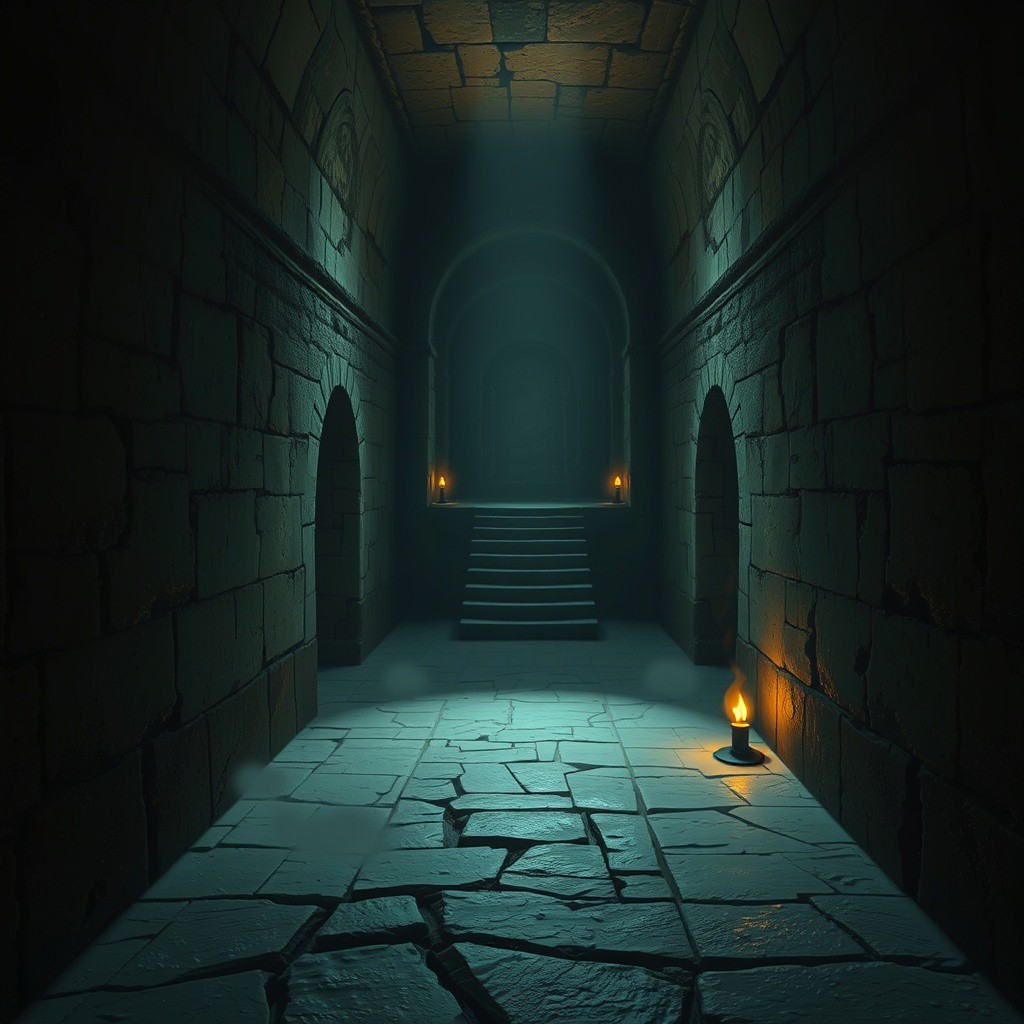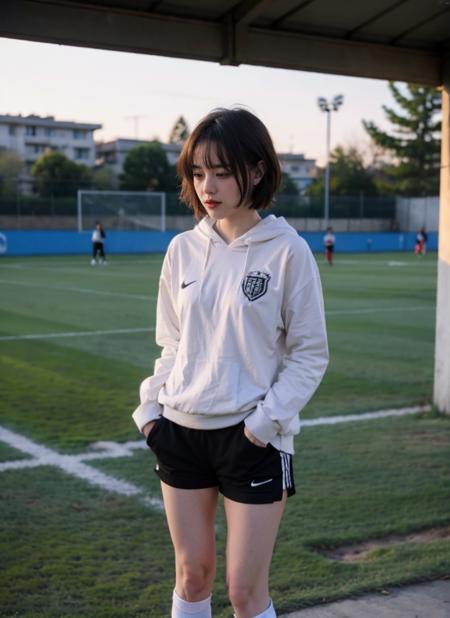A liminal space within the Shadow Temple from The Legend of Zelda: Ocarina of Time—a place where darkness is not just an absence of light, but a presence of its own. The stone corridors stretch endlessly, their surfaces cracked and aged, barely illuminated by flickering torches that cast long, shifting shadows. The air is heavy, damp, and filled with the faint scent of decay, as if the temple itself is rotting in silence. An eerie mist clings to the floor, moving unnaturally, as if drawn toward something unseen. The walls whisper—faint, distant sounds that might be echoes, or something else entirely. Ancient carvings, their meanings long forgotten, seem to change when looked at for too long. Endless staircases descend into darkness, their depths unfathomable, while narrow bridges stretch over voids that should not exist. The temple is empty—yet the overwhelming feeling of being watched, followed, hunted is impossible to ignore. The further one ventures, the less real the world outside feels. The Shadow Temple is not just a place, but a void, a boundary between the living and the lost—a forgotten nightmare, waiting for those who dare to enter




















